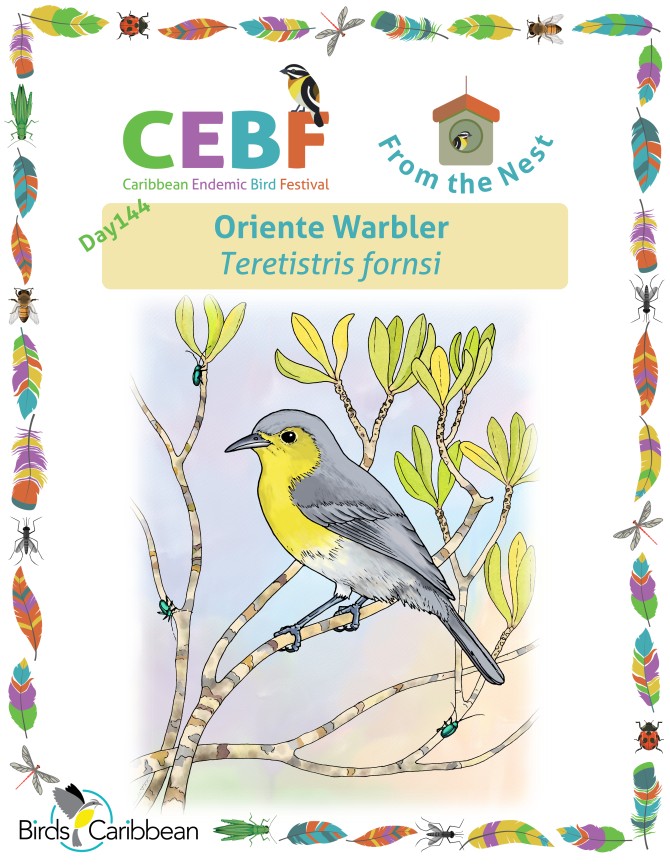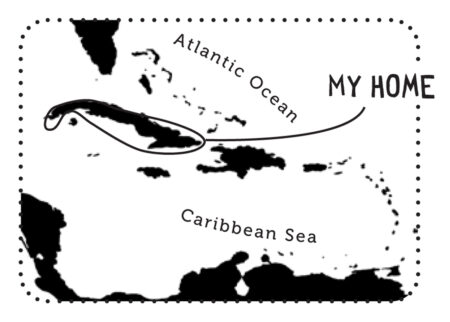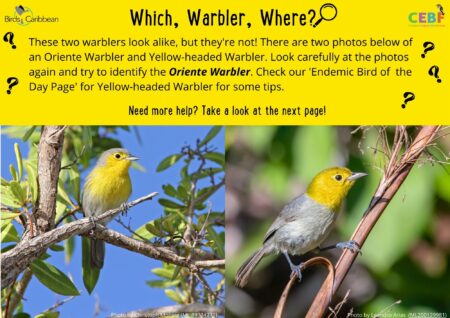Celebrate the Caribbean Endemic Bird Festival (CEBF) with us! Our theme in 2024 is “Protect Insects, Protect Birds”—highlighting the importance of protecting insects for birds and our environment. Have fun learning about a new endemic bird every day. We have colouring pages, puzzles, activities, and more. Download for free and enjoy learning about and celebrating nature!
Endemic Bird of the Day: Oriente Warbler
It is impossible not to stop and marvel at the spectacular hubbub of a foraging flock of Oriente Warblers (Teretistris fornsi). Not only is this warbler is endemic to Cuba where it is known as the ‘Pechero’, these little birds belong to a family known as ‘Teretistridae’—where all the members are only found in Cuba and its surrounding cays!
Its simple but unique plumage instantly grabs your attention. The upper parts of its body are bluish gray which contrast strikingly with the yellow of its lower parts. That delightful lemony yellow extends from around the eyes and throat to the upper belly. The lower belly and undertail are pale gray, and the flanks have a dull brownish wash. Males and females look alike. Don’t confuse this bird with its cousin, the Yellow-headed Warbler, which has a yellow crown and is gray on the belly.
If the Oriente Warbler’s flashes of yellow and gray don’t immediately stop you in your tracks, its melodious song will. It has been described as “buzzy notes interspersed with sweeter notes.” Their call, however, is a shrill “tsi-tsi-tsi.” The Oriente Warbler also emits a series of loud, metallic calls that, during non-reproductive periods, attract several migratory and resident passerines to form mixed foraging flocks.
Orient Warblers can be found in dry coastal scrub and forest habitats along the central-eastern coast of Cuba. They specialize in feeding on all types of insects, but they have also been observed feeding on lizards of the Anolis genus, seeds, and flowers. Their foraging behavior is spectacular—like the Yellow-headed Warbler, they perform vertical and horizontal sweeps through all levels of the vegetation. It is common to find 10 or more individuals foraging together from ground level, up to the branches, trunks, or foliage of the trees!
Oriente Warblers reproduce during the months of March to July with the arrival of spring. Interestingly, researchers from the Eastern Center for Ecosystems and Biodiversity (BIOECO) have observed male Oriente Warblers paired with more than one female! They build cup-shaped nests using rootlets, vines, fine grasses, and ball moss. These nests are found in the branches of thorny plants. Females lay 2 to 3 light blue eggs with brown specks on the wide end. These are attended to by only one parent, most likely the female. The chicks make their wobbly exit from the nest after about a month, but remain with their parents for a few weeks. During this time, parents keep a watchful eye on them, showing them where to find food and stay safe from predators.
The size of the Oriente Warbler population is currently uncertain but it is believed that the population is stable, which is why the IUCN classifies the Pechero as “Least Concern.” If you enjoy nature, do not hesitate to visit Cuba to observe this absolute jewel of its birdlife!
Learn more about this species, including its range, photos, and calls here. Great news! If you’re in the Caribbean, thanks to BirdsCaribbean, you have free access to Birds of the World and you can find out even more in the full species account of this bird!
Thanks to Arnaldo Toledo for the illustration and Claudia Mantilla & Carmen Plasencia León for the text!
Colour in the Oriente Warbler
Download our West Indies Endemic Bird colouring page. Use the photos below as your guide, or you can look up pictures of the bird online or in a bird field guide if you have one. Share your coloured-in page with us by posting it online and tagging us @BirdsCaribbean #CEBFfromthenest
Listen to the song of the Oriente Warbler
The song of the Oriente Warbler is a jumbled combination of buzzy “zhip” and chipping “tip” notes.
Puzzle of the Day
Click on the image below to do the puzzle. You can make the puzzle as easy or as hard as you like – for example, 6, 8, or 12 pieces for young children, all the way up to 1,024 pieces for those that are up for a challenge!
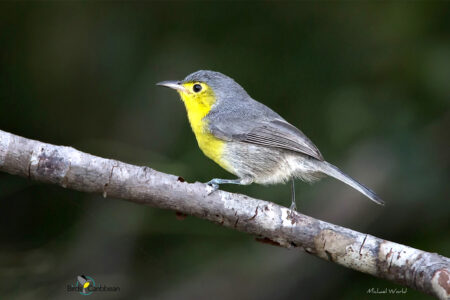
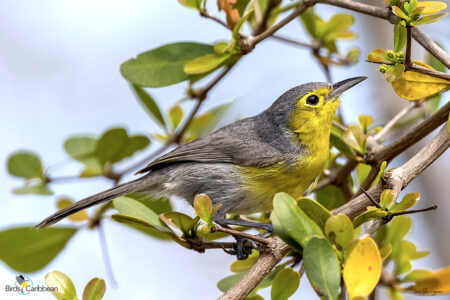
Activity of the Day
FOR KIDS : On Cuba you might spot several different types of warblers. There are two little birds amongst them who look very much alike, but they’re not the same type of bird! Once is today’s endemic bird, the Oriente Warbler, and the other is the Yellow-headed Warbler. Both are mainly gray and yellow! In our activity of the day you need to look carefully at two photos and try to identify the Oriente Warbler. Check the text above for some handy tips.
If you get stuck and feel like you need a bit of extra help then take a look on the second page of this activity. You will find some helpful hints to set you on the right track.
Think that you found the Oriente Warbler? You can check if you are right on our answer sheet here. This activity is perfect to play with school groups or outdoor education clubs etc.
FOR KIDS AND ADULTS : Enjoy this video of an Oriente Warbler in the wild!
Wondering about some of the ways we monitor birds like the Oriente Warbler? Read all about the first-ever BirdsCaribbean bird banding workshop in Cuba!

